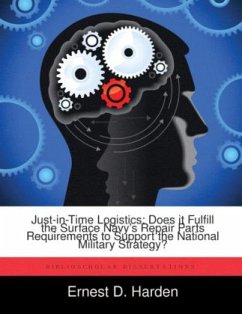Since the end of the Cold War, the U.S. has been drawing down its military. The national military strategy was altered to require the military to be able to defeat two adversaries in two nearly simultaneous major theater wars. With the drawdown came reduced infrastructures and funding. The Navy has been investigating methods to reduce costs of supporting its warfighting forces while providing reliable and timely support. It turned to industry to find the most efficient means of providing the necessary support to surface ships while supporting two nearly simultaneous major theater wars. The most prominent of the changes implemented from industry has been the Just-in-Time logistics model. This model requires reduced inventories and greater reliance on contractors and transportation to meet the repair parts needs of the surface Navy. Comparison of strategic capabilities, Navy theater repair parts distribution capabilities, and conditions of the battlefield with fleet requirements will provide a framework for determining if Just-in-Time logistics can meet the repair parts requirements of the surface Navy during two nearly simultaneous major theater wars.








